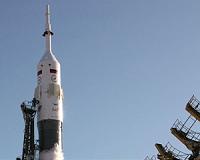 |
for Astrobiology Magazine Moffett Field CA (SPX) Sep 24, 2010 When packing for a manned mission to Mars or the Moon, the best thing to bring may not be food or fuel, but specially designed organisms that can create those things for you. Scientists are researching the possibility of engineering synthetic organisms that could use the resources available in the solar system to create the supplies astronauts would need to survive on another planet. "Personally I'm interested in space settlement," said John Cumbers, a graduate student at NASA's Ames Research Center in Moffett Field, Calif., who is researching synthetic microbes. "I think we have two choices. We can either go into space and be living inside a tin can, or we can be going into space and recreating in space some of the beauty of nature we have here on Earth." Cumbers said he wasn't advocating terraforming, or completely restructuring the surface of a planet to mimic Earth, but rather using bioengineered organisms in a planned and contained way to make life easier in an alien environment. "I think there's a lot that we can do that's productive with biology without having to release organisms in an unplanned fashion," Cumbers told Astrobiology Magazine.
Dangerous microbes? However, other scientists advise reining in fears. "I don't think this would be particularly hazardous," said Chris McKay, a planetary scientist at Ames who is not involved in Cumbers' project. "The sort of organisms that would be good at doing mineral extraction - acidophiles for example - are not the type of organisms that cause disease." And, he said, these synthetic organisms would present no more risk of contaminating searches for alien life than would the normal microbes that would be carried there by humans and spacecraft. "In any case we will have to learn how to tell the difference between contamination from Earth and alien life," McKay said.
Making life easier To fix that issue, researchers might want to give that organism genes from extremophile life - species on Earth that are adapted to extreme environments and are well-suited to tolerate cold and resist UV radiation. Scientists have already achieved some successes in this quest. Cumbers described an experiment where researchers genetically engineered an E. coli bacterium to survive at lower temperatures than it normally does. They accomplished this by transferring the genes for a chaperone (a protein that helps other proteins to fold correctly) from a cold-tolerant organism found in sea ice into an E. coli cell. One goal that could prove useful for space exploration is creating a synthetic version of spirulina, a dietary supplement made from microscopic algae produced by cyanobacteria. Spirulina is a complete protein, meaning it contains all of the essential amino acids humans need in their diet. That makes it an ideal food to bring on a space mission. But spirulina generally grows in open ponds in the warm waters of Hawaii - so adapting it to life on, say, the Moon, is an engineering challenge.
Packing for space "For manned missions to the Moon or Mars we're going to have to take nearly everything with us, at least at the beginning," Cumbers said. "If we have this new technology where we can take the complete genome of an organism and send it into space, and can have that single cell replicate from the resources it finds around it, rather than resources we've taken with us, then we've started to tackle the problem." Cumbers presented his work with Lynn Rothschild, his advisor at Ames, at the Astrobiology Science Conference in League City, Texas, in April.
Share This Article With Planet Earth
Related Links Ames Research Center Space Tourism, Space Transport and Space Exploration News
 Soyuz Spacecraft Upgrade Ups Payload By 70 Kg
Soyuz Spacecraft Upgrade Ups Payload By 70 KgMoscow, Russia (RIA Novosti) Sep 23, 2010 New onboard digital command and control systems have helped increase the payload of Russia's manned Soyuz TMA-01M spacecraft by 70 kg, the head of the Energia space corporation said on Tuesday. The new equipment replaces the Argon analogue system that has been used for more than 30 years, Vitaly Lopota said. A Soyuz with a new digital computing and telemetric system will be launched ... read more |
|
| The content herein, unless otherwise known to be public domain, are Copyright 1995-2010 - SpaceDaily. AFP and UPI Wire Stories are copyright Agence France-Presse and United Press International. ESA Portal Reports are copyright European Space Agency. All NASA sourced material is public domain. Additional copyrights may apply in whole or part to other bona fide parties. Advertising does not imply endorsement,agreement or approval of any opinions, statements or information provided by SpaceDaily on any Web page published or hosted by SpaceDaily. Privacy Statement |